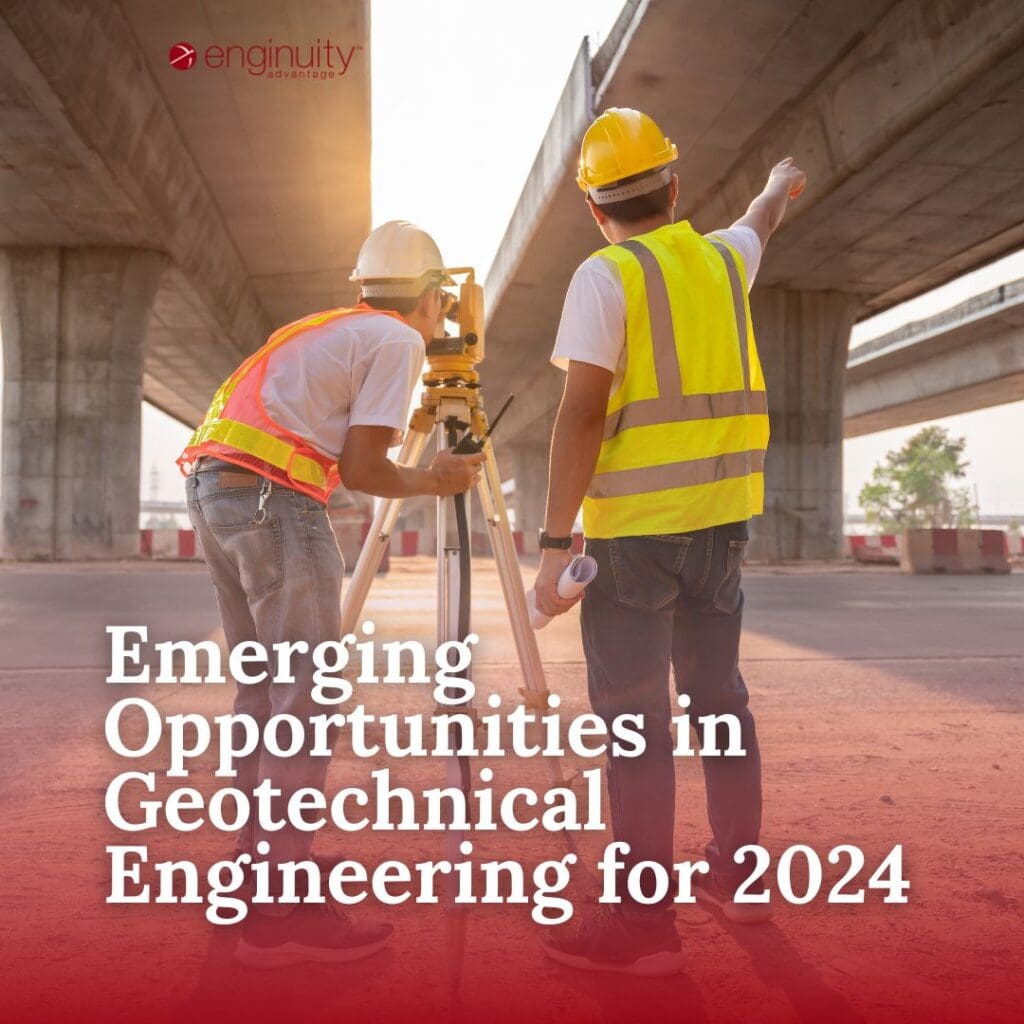Emerging Opportunities in Geotechnical Engineering for 2024

As we step into 2024, the field of geotechnical engineering is experiencing an exciting period of growth and innovation. This is a time of significant opportunity for professionals in the field, driven by key factors that are shaping the industry. Whether you’re a budding geotechnical engineer or an experienced professional seeking new ventures, understanding these driving forces and emerging trends is crucial.
Key Factors Driving the Geotechnical Engineering Market
- Infrastructure Development: The ongoing urbanization and population growth have led to an ever-increasing demand for robust infrastructure. Geotechnical engineering plays a critical role in constructing sustainable and efficient structures like skyscrapers, bridges, and dams. The global geotechnical engineering market size was valued at USD 2.72 billion in 2019 and is expected to grow, fueled by continuous infrastructure development.
- Environmental Awareness: In today’s environmentally conscious era, sustainable practices are no longer optional but essential. Geotechnical engineers are now focusing more on eco-friendly solutions, aiming to minimize environmental impacts. This shift towards sustainability is not only a response to global ecological concerns but also a market driver pushing the industry towards innovative, greener methodologies.
- Technological Advancements: The impact of technology on geotechnical engineering cannot be overstated. Advancements in tools and software for analyzing and modeling geological data have revolutionized the field. These technologies enhance project efficiency, accuracy, and speed, contributing significantly to market growth.
Emerging Trends in Geotechnical Engineering
- Building Information Modeling (BIM): BIM technology is changing the landscape of project planning and execution. By creating detailed 3D models, geotechnical engineers can gain a comprehensive view of a project, allowing for improved decision-making and collaboration. The use of BIM is expected to increase in the coming years, further influencing project success rates.
- Harnessing Big Data and AI: The expansive power of big data and the sharp insights of artificial intelligence (AI) are reshaping the geotechnical field. From in-depth analysis of site condition data sets to employing AI for the predictive maintenance of geotechnical assets, these tools offer unprecedented project planning and problem-solving capabilities. AI will soon become an integral part of engineering, with its implementation in the industry expected to rise by 45% in the next three years. Mastery of AI platforms and big data analytics is swiftly becoming an essential part of the geotechnical engineer’s toolkit.
- Seismic Resilience: As urbanization pushes into seismic hotspots, building earthquake-resilient structures has become paramount. Modern seismic engineering techniques, such as base isolation and energy dissipation systems, are being integrated into structures worldwide to mitigate the effects of earthquakes. These advanced seismic retrofitting techniques have the potential to halve the losses from seismic events. Geotechnical engineers with proficiency in seismic resilience technologies are in high demand to meet the increasingly stringent standards of urban safety.
- Biogeotechnical Engineering: The synergy of biology and geotechnical engineering heralds a new era of sustainable construction. Biogeotechnical engineering, particularly through innovations like microbially induced calcite precipitation (MICP), is pioneering environmentally friendly soil stabilization techniques. Equipped with knowledge in biotechnical processes are poised to lead the charge in eco-conscious construction and ground improvement practices.
- Geosynthetics Application: The adoption of geosynthetics like geotextiles and geomembranes is on the rise. These materials are known for enhancing stability, drainage, and erosion control, making them invaluable in various geotechnical projects. Their cost-effectiveness and functional versatility contribute to their growing popularity in the industry.
- Advanced Digital Soil Mapping: Gone are the days when soil analysis was a game of educated guesses. Today, digital soil mapping is at the forefront of geotechnical innovation, combining the power of predictive modeling and advanced algorithms. This technology allows for expansive soil property analysis with astonishing accuracy. The digital soil mapping market is on a significant upward trajectory, projected to grow from 3.3 billion in 2020 to 5.5 billion by 2025. This surge highlights an urgent demand for professionals adept in geostatistics and predictive soil modeling software—a must-have skill for the modern geotechnical engineer.
A World of Opportunities Awaits
The world of geotechnical engineering in 2024 is vibrant and filled with potential. With key market drivers like infrastructure development, environmental awareness, and technological advancements at play, the opportunities for growth and impact are immense.
If you’re excited about these prospects and ready to explore what lies ahead, take a look at our open positions. We’re here to help you find your place in this dynamic field. The future of geotechnical engineering is bright, and it’s waiting for innovative minds like yours.
Unlock Dream Careers & Elite Talent: Just One Click Away!


